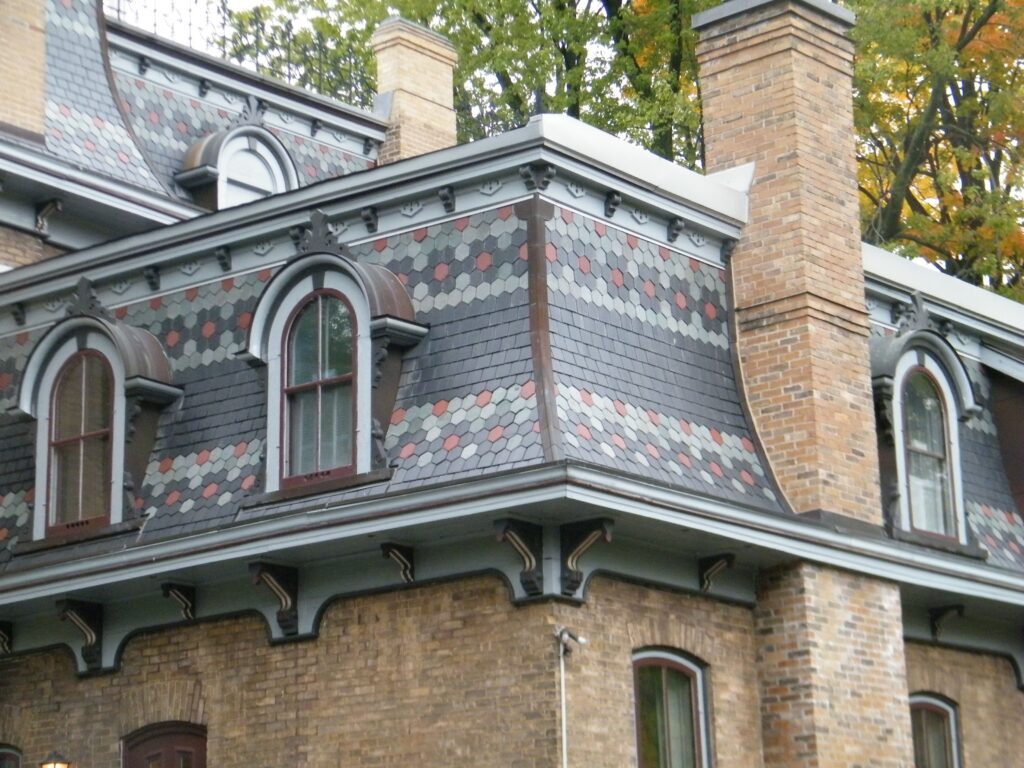The Ultimate Roofing Blog
A Shingled History: Exploring Roofing Styles in West Virginia

West Virginia’s rich history is evident not only in its mountains and valleys, but also in the architectural styles of its buildings. Roofing plays a vital role in protecting these structures and reflecting the trends of their times. Let’s take a journey through West Virginia’s roofing history, focusing on specific city examples in Harrison, Marion, and Monongalia counties.

Early Shelters (Pre-1800s):
- Frontier Days: West Virginia’s early settlers relied on readily available materials like wood for their roofs. Think simple log cabins in places like Clarksburg (Harrison County) or Fairmont (Marion County) with wooden shakes, offering basic protection from the elements.
- Shale and Slate: As settlements grew, so did the use of shale and slate for roofing. These quarried materials, commonly seen in Buckhannon (Upshur County) and Morgantown (Monongalia County), were more durable than wood shakes and offered better weatherproofing.
The 19th Century & Industrial Age (1800s-Early 1900s):
- Rise of Metal Roofing: The 19th century saw the introduction of metal roofing in West Virginia. Corrugated metal became a popular choice for its durability and fire resistance, gracing commercial buildings and public structures in cities like Clarksburg and Fairmont.
- Slate’s Continued Popularity: Slate roofs remained a status symbol for wealthier homes throughout the 1800s, dotting the landscapes of historic districts in Weston (Lewis County) and Morgantown.
20th Century and Beyond (1900s-Present):
- Asphalt Shingles Take Over: The 20th century saw the rise of asphalt shingles as a more affordable and easy-to-install roofing option. These became dominant across West Virginia, seen on countless residential homes in cities like Clarksburg, Fairmont, and Morgantown.
- Diversity in Modern Roofing: Today’s roofing materials offer a wider range of choices. Architects and homeowners in West Virginia can select asphalt, metal, slate, tile, or even composite materials depending on style, budget, and desired durability.
Local Variations:
- Coal Mining Influence: Coal mining towns in West Virginia, like Farmington (Marion County), might have seen a prevalence of slate or metal roofs due to their fire resistance, important in areas with higher fire risks.
- German Influence: The German heritage of some West Virginia communities, like those in Shepherdstown (Jefferson County), might be reflected in the use of steeper roof pitches, accommodating slate or metal roofing materials common in Germany.
By exploring the history of roofing styles in West Virginia, we gain a deeper appreciation for the craftsmanship and resourcefulness of past generations. The roofing materials chosen throughout history tell a story about the available resources, technological advancements, and architectural preferences of each era. As West Virginia continues to evolve, it will be interesting to see how roofing styles further develop to meet the needs and aesthetics of the future.
© 2024 ULTIMATE ROOFING All Rights Reserved | Privacy Notice Terms of Service | SITE CREDIT